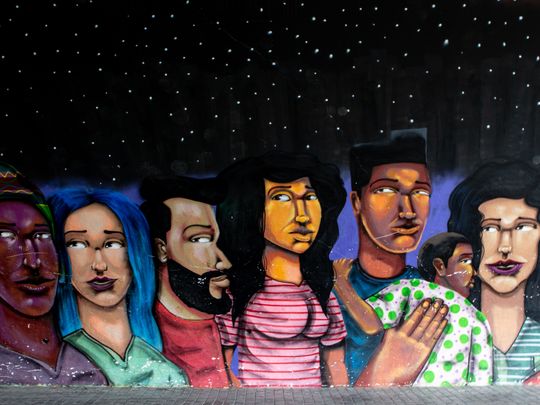
At a time when many democracies are under threat, it is important to highlight the success stories. South Africa may not be the first country that comes to mind as a model democracy, but it should be. In the 28 years since apartheid ended in 1994, South Africa has developed a multiracial, pluralistic form of government that includes a multiparty parliament, independent judiciary, free press, robust civil society, and a broad social safety net.
One could easily assume the opposite. International press coverage of South Africa is often dominated by stories of violent crime and government corruption, giving much of the world a warped view of the country. And some local observers have gone so far as to label South Africa a “failed state.” But while South Africa certainly has its problems, we would do well to remember where the country started almost 30 years ago.
Between modern South Africa’s founding in 1909 and Nelson Mandela’s election as president in 1994, a racial minority maintained political supremacy by legal force and violence. The economy boomed for white people, but the black majority remained overwhelmingly poor, deprived of equal education and opportunities to work. The government restricted black people’s movement and lives even more thoroughly than the American South did under Jim Crow segregation.
Legacy of apartheid
The legacy of apartheid meant that when the African National Congress took power in 1994, living conditions were appallingly unequal. In the mid-1990s, virtually the entire white population lived in modern housing, with access to piped water, electricity, and other basic services. Less than half the black population lived in formal structures or had access to such services, and over 20% lived in flimsy metal shacks.
South Africa’s progress over the past quarter-century is reflected in how those numbers have improved. Today, approximately 80% of black people live in formal structures, 65% have direct access to piped water, and over 95% have access to electricity. Making headway on a promise written into South Africa’s post-apartheid constitution, the government built 3.2 million houses for the poor between 1994 and 2018.
Although millions still live in informal settlements, and though people often must wait years for a house, the government has made greater strides than most developing countries in providing suitable shelter for its citizens. The government has also provided cash grants to millions of the most vulnerable, keeping them out of extreme poverty.
South Africa’s post-apartheid trajectory is an example of “dignified development.” Across the divides of race, language, gender, sexual orientation, wealth, and disability status, people’s rights, voices, and histories have been enshrined in law and in practice, and vigorously defended by civil society.
Although white South Africans constitute less than 10% of the population, their continued economic dominance and international ties have made them important interlocutors in shaping global opinion about the country. And they are often the most critical of the government.
As a white South African man told me (after hearing my American accent), “[The ANC] made this country into a ball of shit.” I have heard similar sentiments from white residents throughout the country.
Staggering economic inequality
When I surveyed adults aged 40 and older in one bellwether municipality in 2019, 55% of white people said life was worse today than under apartheid. Black South Africans tend to recognise much more progress. Nonetheless, 50% of black residents in that survey also said that things were better then, compared to just 40% who said things were better now.
South Africans of all races complain about government corruption, high crime, unemployment, and staggering economic inequality.
Despite improvements, basic services still do not reach substantial segments of the population. These are valid and important concerns. But the broader point to remember is the remarkable degree of progress achieved under a democratic government in a country with an extraordinarily difficult past.
While widespread mistrust toward the government introduces the prospect that the country could succumb to a populist authoritarian, there is little evidence of such a turn so far. South Africa’s multiparty system has done a good job of representing a diversity of perspectives at all levels of government.
Although the ANC has controlled the presidency since Mandela, many of the most important cities and municipalities are governed by coalitions or other parties.
In some ways, South Africans’ expressions of disappointment, and even anger, are evidence of a functioning democracy. Robust public debate about problems like corruption and economic inequality attests to the functioning of a free and vigorous press.
Many of the biggest government scandals in recent years were uncovered by enterprising reporters; in case after case, public anger has led to parliamentary inquiries and sometimes to real change in the form of resignations, prosecutions, and policy reversals.
Rather than seeing these scandals as an indictment of South African democracy, we should take them as proof that the system is working.
I have been travelling extensively in South Africa for three decades, and I am encouraged by its progress. I certainly don’t see a failed state. Is the country’s governance flawed? Of course. Are its politics messy? Definitely. No democracy is perfect, but South Africa offers a more hopeful vision than its critics — both internal and external — are willing to acknowledge.
South Africa’s example of dignified, democratic development offers a realistic alternative for governing diverse societies.
Evan Lieberman is a Professor of Political Science and Contemporary Africa at MIT, is author of the forthcoming Until We Have Won Our Liberty: South Africa after Apartheid (Princeton University Press, June 2022).
Project Syndicate









